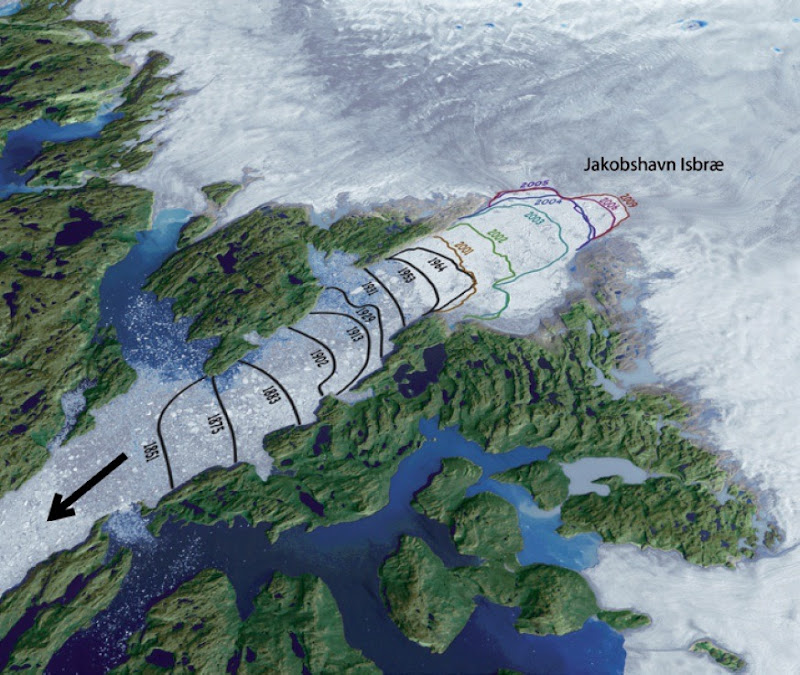Graph of the Day: Retreat of Jakobshavn Glacier, 1851-2009
Jakobshavn Glacier in western Greenland has been rapidly losing ice from its terminus for more than a decade due to warm water currents reaching up the fjord. The arrow indicates direction of discharge, while the glacier retreats back towards the Greenland Ice Sheet. Another study focused on western Greenland’s Jakobshavn Isbrae responsible for draining 7 per cent of the ice sheet’s area, which switched from slow thickening to rapid thinning in 1997 and suddenly doubled its velocity. Here, the change in glacier dynamics is also attributed to destabilization of the glacier terminus, but the researchers are able to attribute that to warmer ocean water delivered to the fjord. However, these researchers were also able to detect short-term and less significant fluctuations in Jakobshavn Isbrae’s behaviour that could be attributed to meltwater drainage events (Holland et al. 2008). They present hydrographic data documenting a sudden increase in subsurface ocean temperature along the entire west coast of Greenland in the 1990s that reached Jakobshavn Isbrae’s fjord in 1997. The researchers trace the warm flow back to the east of Greenland where the subpolar gyre that rotates counter clockwise south of Iceland scoops warmer water from an extension of the Gulf Stream and directs it back west and south around the tip of southern Greenland. In the early 1990s the North Atlantic Oscillation atmospheric pattern switched phase and drove the subpolar gyre closer to the Greenland shore, accelerating the flow of the warm water around the tip and up the western shore, where it eventually reached the Jakobshavn Isbrae fjord (Holland et al. 2008). The delivery of warm water to the base of Jakobshavn Isbrae’s fjord persisted through 2007 and the retreat continued at least through 2008, with shorter term fluctuations affected by surface melt permeating through the ice mass (Holland et al. 2008, Box et al. 2009). Whether this pulse of warm water from the subpolar gyre also affected Helheim and other marine outlet glaciers in Greenland will have to be investigated.
